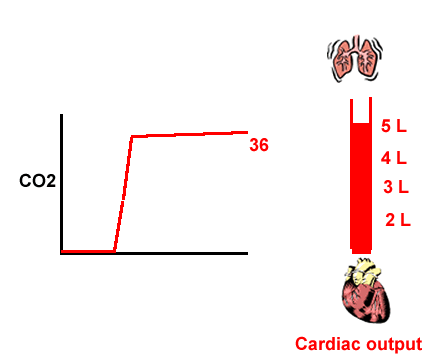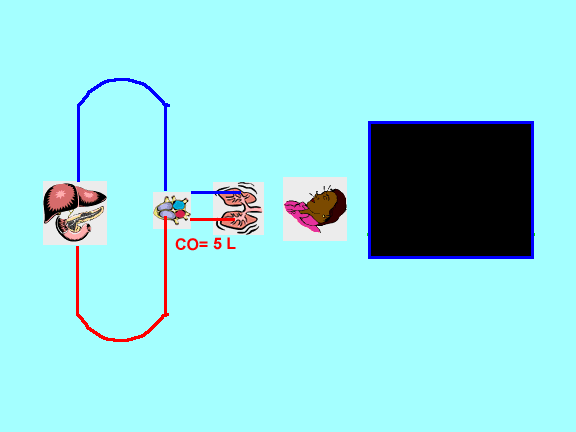Clinical Aspects
Analysis of CO2 waveforms:
Height of the plateau:
Increases in metabolism raise the height of the plateau whereas decreases in metabolism, cardiac output and effective circulating blood volume reduce the height.1-8 The height of the plateau is also dependent on ventilation. Hyperventilation decreases it whereas hypoventilation can result in a gradual increase in the height of the plateau.
| Hypermetabolic states increase the height of the capnograms |
 |
| Decreases in cardiac output decreases the height of capnograms |
 |
| Effective circulating blood volume can reduce the height of capnograms |
 |
| Hypoventilation (Gradual elevation of the height of the capnogram, base line remaining at zero) |
 |
| Hyperventilation (Gradual decrease in the height of the capnogram, base line remaining at zero) |
 |
References
1. Leigh MD, Jones JC, Motley HL. The expired carbon dioxide as a continuous guide of the pulmonary and circulatory systems during anesthesia and surgery. J Thoracic cardiovasc surg 1961;41:597-610.
2. Askrog V. Changes in (a-A)CO2 difference and pulmonary artery pressure in anesthetized man. J Appl Physiol 1966;;21:1299-1305.
3 Shibutani K, Muraoka M, Shirasaki S, Kabul K, Sanchala VT, Gupte P. Do changes in end-tidal PCO2 quantitatively reflect changes in cardiac output? Anesth Analg 1994;79:829-33.
4. Maslow A, Stearns G, Bert A, Feng W, Price D, Schwartz C, Mackinnon S, Rotenberg F, Hopkins R, Cooper G, Singh A, Loring SH. Monitoring end-tidal carbon dioxide during weaning from cardiopulmonary bypass in patients without significant lung disease. Anesth Analg 2001;92:306-13.
5. Weil MH, Bisera J, Trevino RP, Rackow EC. Cardiac output and end-tidal carbon dioxide. Crit Care Med 1985;13:907-9.
6. Ornato JP, Garnett AR, Glauser FL. Relationship between cardiac output and the end-tidal carbon dioxide tension. Ann Emerg Med 1990;19:1104-6.
7. Jin X, Weil MH, Povoas H, Pernat A, Xie J, Bisera J. End-tidal carbon dioxide as a noninvasive indicator of cardiac index during circulatory shock. Crit care Med 2000;28:2415-9.
8. Isserles SA, Breen PH. Can changes in end-tidal PCO2 measure changes in cardiac output? Anesth Analg 1991;73:808-14.

 Twitter
Twitter Youtube
Youtube









